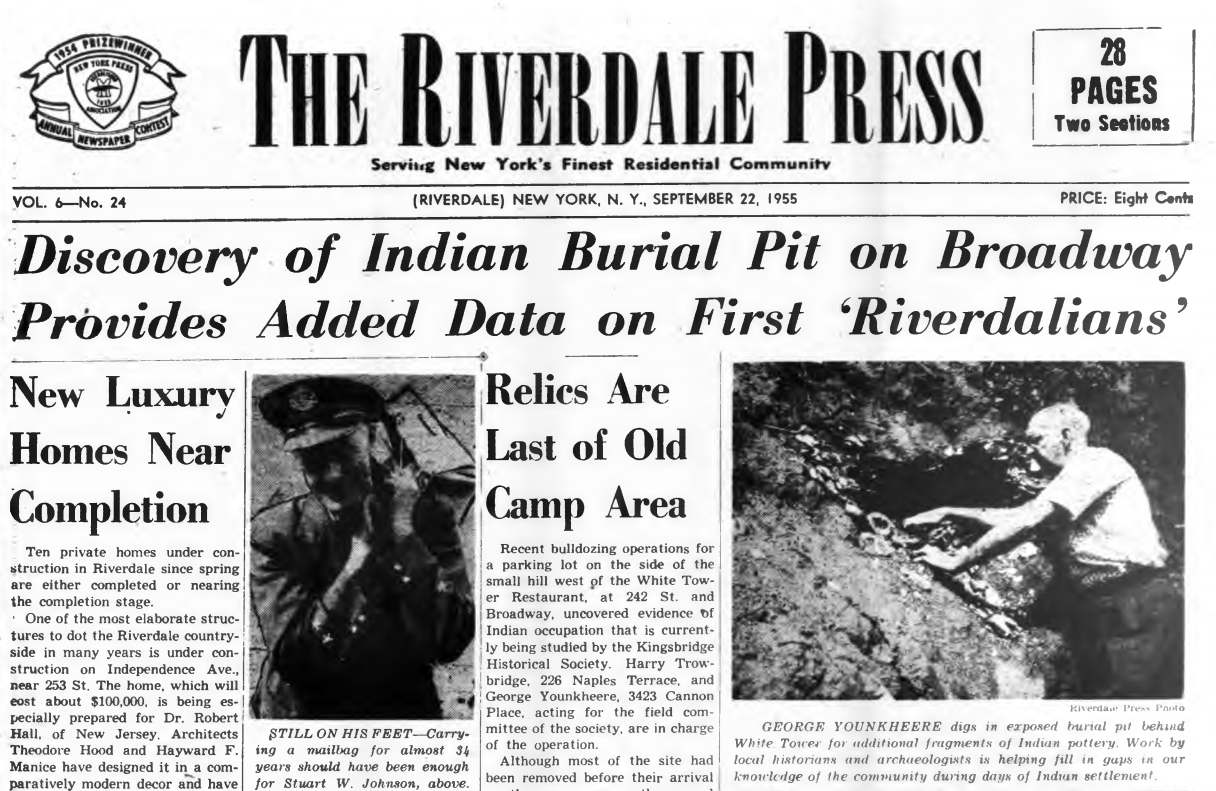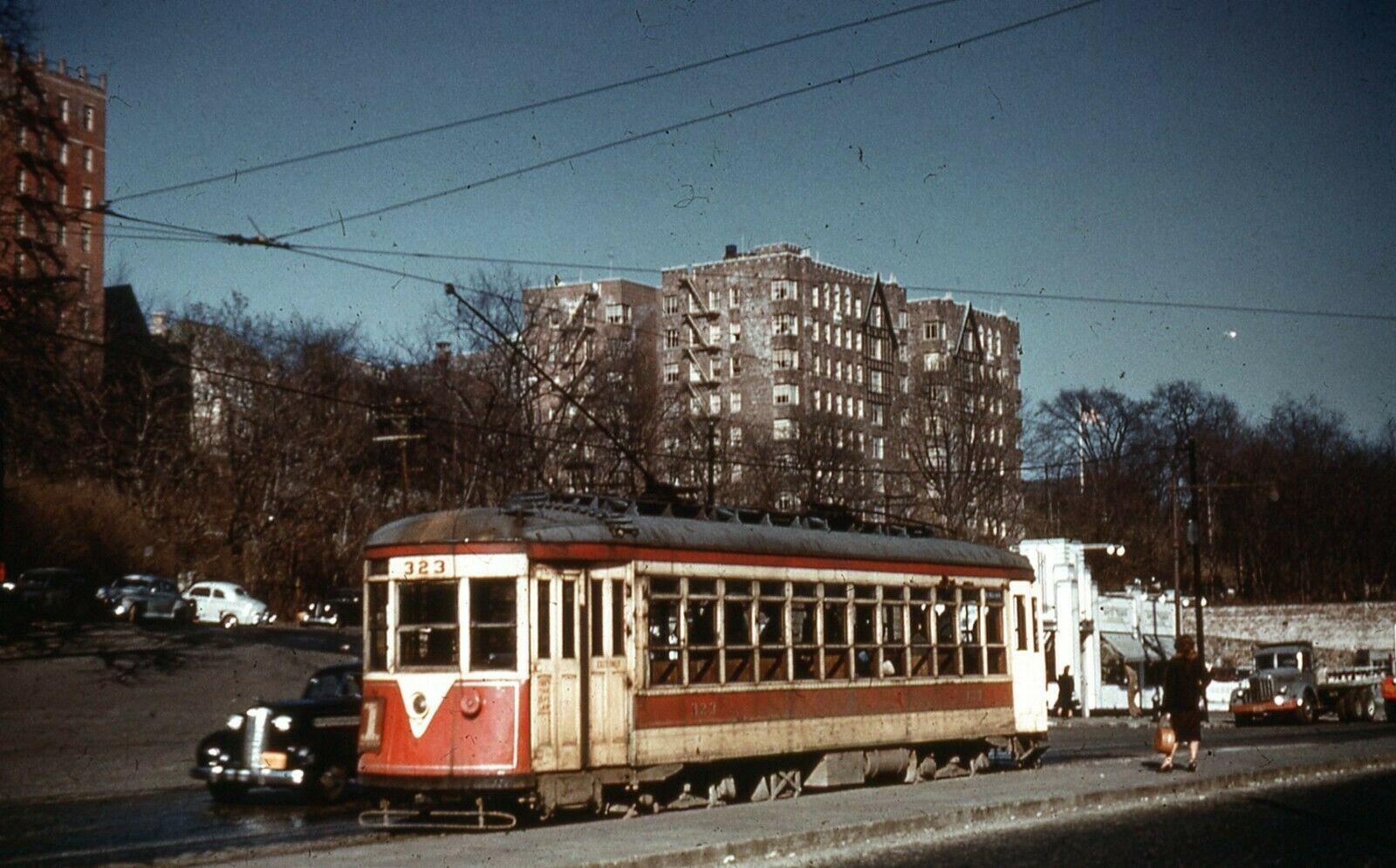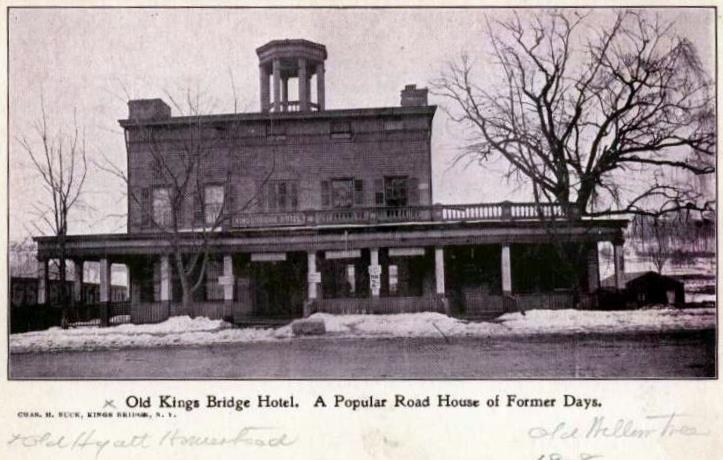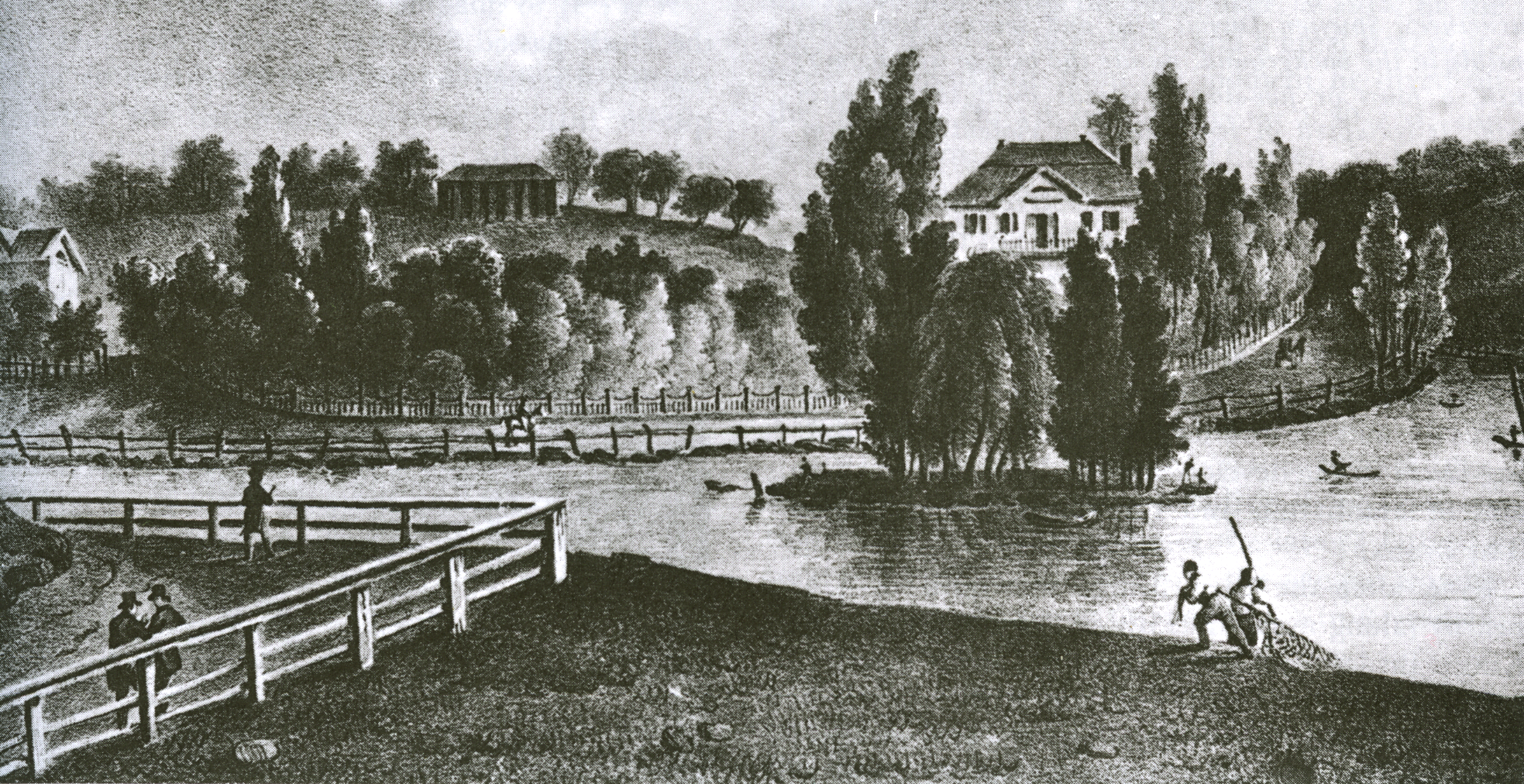Home › Forums › Native Americans › Native Americans on the Parade Ground of Van Cortlandt Park
- This topic has 2 replies, 2 voices, and was last updated 5 years, 7 months ago by
 ndembowski.
ndembowski.
-
AuthorPosts
-
-
April 7, 2020 at 6:48 pm #1323
With the news of a Covid-19 field hospital coming to Van Cortlandt Park, we got a request on Twitter for a history of the park. In my response I decided to focus just on the Parade Ground (where the hospital will be located). The place has a long history and I started with the first people to live there—the Native Americans.
Here are some additional images/sources (but you should read the tweets here first so that it makes sense):
I referred to the discovery of the Native American vessel or clay pot in 1955:

It was found when building the parking lot for what today is Burger King on Broadway by the Parade Ground. In 1955 they were building a White Tower (a burger place like White Castle). You can see it poking out from behind the trolley. I am not sure where this photo came from originally.

Oysters were a big deal in the neighborhood until the turn of the 20th century. The Kingsbridge Hotel (on Marble Hill) was famous for its oysters.

Just next to the King’s Bridge you can see an oyster shack in this 1873 Harpers Illustration:

Here is the full diary entry from the visiting colonist, Dr. Alexander Hamilton, who stayed at a tavern in Kingsbridge in August of 1744:
“I breakfasted at Doughty’s. My landlord put himself in a passion because his daughter was tardy in getting up to make my chocolate. He spoke so thick in his anger and in so sharp a key that I did not comprehend what he said. I saw about 10 Indians fishing for oysters in the gutt before the door. The wretches waded about stark naked and threw the oysters, as they picked them up with their hands, into baskets that hung upon their left shoulder. They are a lazy, indolent generation and would rather starve than work att any time, but being unaquainted with our luxury, nature in them has few demands, which are easily satisfied.”
“Doughty’s” was the tavern at W. 230th Street and Broadway, where today there is a Dunkin Donuts. Here is a Gustave Milbert drawing of the tavern building in the early 1800s. You can see men fishing for oysters in the foreground:

The link to JB James’ map of the park can be found here:
https://digital.library.cornell.edu/catalog/ss:549744
JB James described the burial pits on the Van Cortlandt Park Parade Ground in some detail later, referring to the time when the bulldozers came to level out the Parade Ground:
“As the scrapers removed the earth to fill in lower levels, great quantities of oyster and clam shells were brought to light. They were not in the form of a blanket, but were in holes or firepots averaging some three feet wide by eighteen inches to two feet in depth. Among the shells and ashes were numbers of broken bits of potsherds, bones and parts of deer antlers, stone implements, charred corn and nuts, etc. In some places, the fireplaces or hearths were close together; in others, some distance apart. An interesting discovery was the presence of a dozen skeletons in a state of decay. Nearly all were embedded in shells and ashes of the hearths, confirming a theory that the interments had been made in winter when the frozen ground made it impossible to dig a grave.”
-
April 7, 2020 at 7:31 pm #1324
Thank you for posting this, very interesting. “but were in holes or fireboats” are fireboats some type of hole? Dr. Hamilton, waiting to be fed, complains about lazy Indians fishing (working). That section was very interesting, gave you an idea of how people felt and lived back then.
-
April 7, 2020 at 7:53 pm #1325
Thank you for the compliment and for finding the typo. It should read “firepots” not “fireboats”–just fixed it.
Yes, I agree about the Hamilton quote. It also begs the question of just how long the Munsee were living in this area. That was 1744. I have not come across any references to their presence in the neighborhood after that date.
The diary entry was from the morning of August, 31st. He had spent the previous night in the tavern in Kingsbridge and his diary entry from the day before reads:
“Coming from [New Rochelle] att 4 o’clock I put up this night att Doughty’s who keeps house att Kingsbridge, a fat man much troubled with the rheumatism and of a hasty, passionate temper. I supped upon roasted oysters, while my landlord eat roasted ears of corn att another table. He kept the whole house in a stirr to serve him and yet could not be pleased. This night proved very stormy and threatened rain. I was disturbed again in my rest by the noise of a heavy tread of a foot in the room above. That wherein I lay was so large and lofty that any noise echoed as if it had been in a church.”
He must have been travelling on the Boston Post Road if he was New Rochelle the night before. I also found it interesting that the fare on offer was oysters and corn–traditional local food in the Munsee tradition. Doughty’s Tavern was lucky they didn’t have Yelp in those days.
-
-
AuthorPosts
- You must be logged in to reply to this topic.